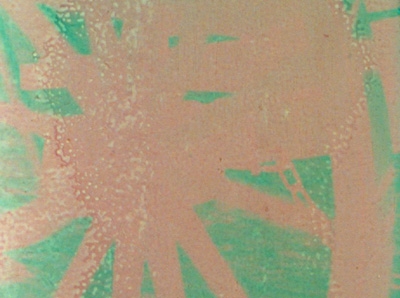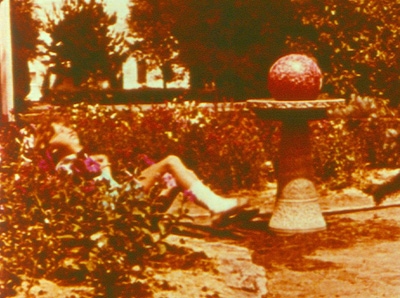

1981, 16 mm, colour, silent, 17 min.
"Brakhage describes the impulse to make the 'Murder Psalm' as coming from a nightmare he had of murdering his mother. The film is made largely from found footage... The most striking imagery comes from an educational film on epilepsy, and Brakhage's film is structured around that preexisting narrative. There is a girl seen in various settings: in a yard gazing into a birdbath into which a bright red ball is thrown; as a rider in a car; as the subject of a medical examination; and as a figure contemplating herself before a mirror and, through a cinematic dissolve, growing into a mature version of herself. Also included in this film is a doctor who seems to explain the cerebral dysfunction that causes her epilepsy... The film material about epilepsy is transformed into a meditation on the social and cultural circumstances of childhood trauma via a visual string of semicircular imagery. By substituting one image for another - for example, the model of the brain for the covered wagon - Brakhage links their meanings and implications. The girl's seizure is made part of the social organization through visual rhyme. Within Brakhage's system, all of the semicircular imagery can be said to 'cause' her traumatic response... A cartoon of a mouse-as-policeman careening forward is integrated into the rest of the film material in a number of ways. The mouse's club is shaped like a penis and at one point, placed like the penis of the cadaver in the autopsy footage. Again, Brakhage is pointing out the phallic nature of violence in general..."
From The Untutored Eye: Childhood in the Films of Cocteau, Cornell, and Brakhage, by Marjorie Keller (Rutherford, New Jersey: Fairleigh Dickinson University Press).
